Uneven subfloors can be a huge hassle, especially when installing hardwood or tile flooring. There are many reasons for an uneven floor. While they can be leveled, it may cost you more than your budget – so what can you do with your uneven floors?
Uneven subfloors or floors can be a pain to walk on, and finding the right flooring for them is essential when you cannot have them worked on. There are many different types of flooring, and while you may not be able to have the classic hardwood or tiles – you can definitely have something similar or better. Here are the best floorings for uneven floors.
Epoxy
If you have uneven floors, flexible flooring like epoxy is the best choice. This is because the epoxy self-levels itself and covers the entire floor evenly.
Nevertheless, the term “best” depends on the strength of the underlayer. Soft, inflexible underlayers like cork don’t work well with epoxy. Thus, the substrate must be rigid enough.
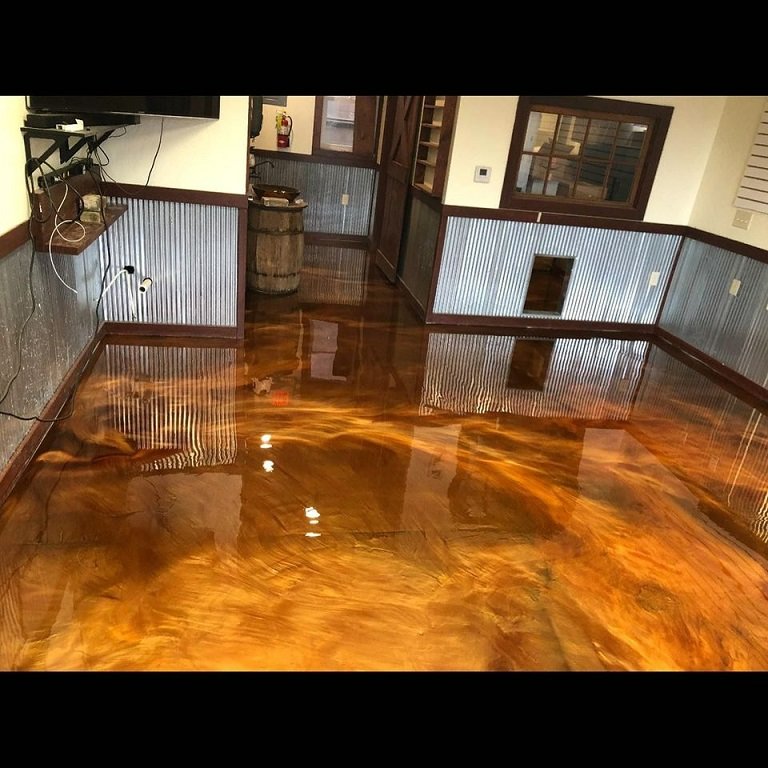
Additionally, the epoxy layer thickness is about 3-5 millimeters. If your unevenness is greater than that, it won’t work.
You can use epoxy even on floors with a high degree of unevenness. You will need to buy more buckets of epoxy, however. More epoxy means more money.
| Effort | Outcome | Cost |
| Average | Superb | Expensive |
Engineered Hardwood
Engineered hardwood flooring is also constructed of real hardwood on the top, and it also has synthetic elements as the base which provides for the warmth and comfort you feel underfoot. Remember, you can’t install engineered hardwood on uneven floors. You have to flatten the subfloor. However, it’s a suitable option.
An engineered hardwood floor can be installed over an uneven concrete floor by using self-leveling underlayment. Many self-leveling compounds are suitable for engineered woods. It may not be the best choice for uneven floors, but it won’t cost much money.
Another way to use engineered hardwood on uneven concrete floors is to use Dricore Subfloor. According to DriCore, if the floor variances are less than 1/4”, you’ll only need to use the Dricore subfloor between concrete surfaces and engineered hardwood. Check the official site to measure flooring variances.
| Effort | Outcome | Cost |
| Minimal | Average | Minimal |
Engineered wood flooring is better than standard solid hardwood in terms of resisting moisture. It will perform well throughout the seasons and also withstand the bumpy surfaces of the uneven floor. The only downside is that the floors might be a bit loud, as the air goes below in the spaces of the bumpy uneven flooring.
Interestingly, you can even use large engineered hardwood boards as a sub-floor to even it out. Next, use any flooring on the top of it.
Luxury Vinyl
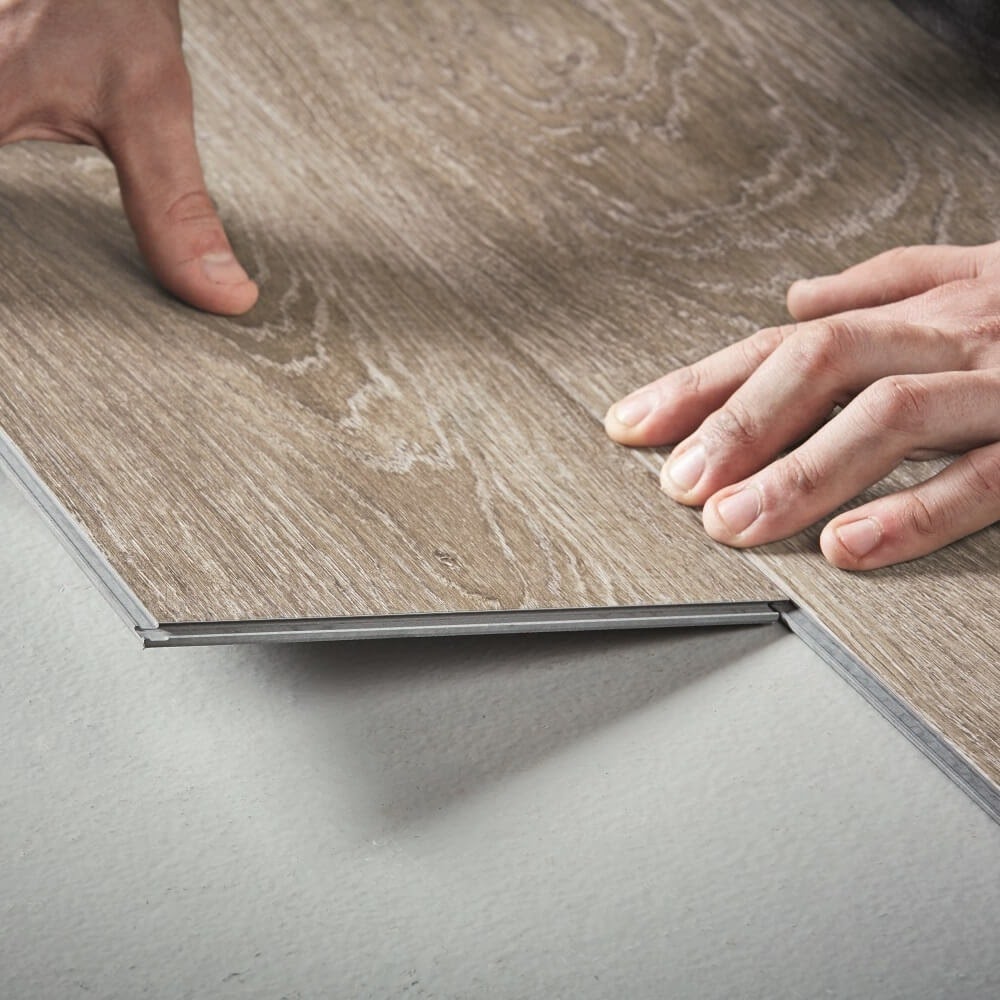
Luxury vinyl tiles or planks can also work very well on uneven floors. They are available in the form of tiles or planks that have a click and lock installation method. Like engineered hardwood, it is also a floating floor.
Uneven sub-floor prevents vinyl planks to click together.
Before laying luxury vinyl planks, make sure the sub-floor has an unevenness below 3/16 or 4.7mm. For greater unevenness, sand down the subfloor or use a self-leveling compound in the case of a concrete uneven flooring.
| Effort | Outcome | Cost |
| Minimal | Better | Minimal |
However, just like engineered flooring, luxury vinyl plank and LVT might be a bit loud. They are generally quiet but the uneven floor surface or the cavity underneath the installation can cause noises when it is stepped on.
Sheet Vinyl
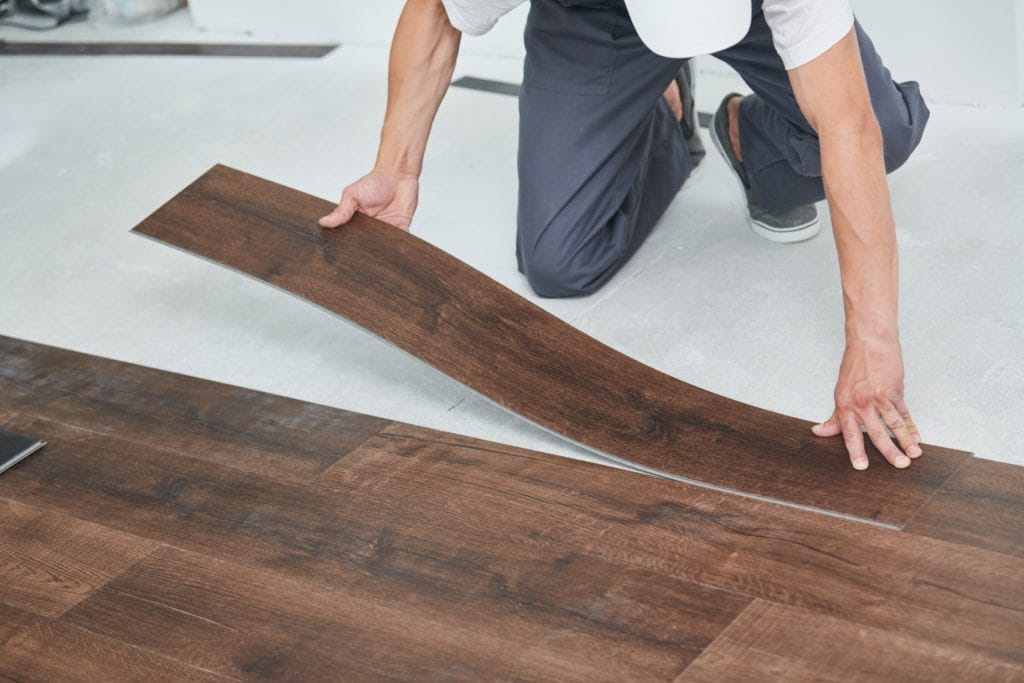
Unlike LVT and LVP, sheet vinyl comes in a roll. It possesses different qualities than luxury vinyl flooring. Some can be comfortable and thick whereas some can be thin. The quality and the thicknesses vary, but it is good to have thick sheet vinyl in most areas and thin sheet vinyl in the bathroom areas.
If the floors were even, you could go for a decent quality sheet vinyl. But since the floors are not even, it is important to select a sheet that has the best texture, is flexible, and is thick. These qualities are a must when being installed on uneven floors.
| Effort | Outcome | Cost |
| More Effort | Poor | Cheaper |
Without a subfloor, it may not cover the entire bump, though it can cover the whole flooring on a single surface.
Sheet vinyl should be your last option for uneven floors as a flat sub-floor is mandatory.
Laminate

Laminate flooring was one of the earliest floating floors to come into existence. It is created with wood composite as well as some synthetic elements within the planks. It has a click and lock installation style, which makes laminate ideal for uneven floors.
Laminate flooring can mimic stones, tiles, and hardwood. They also come in a huge number of designs and patterns, and function quite well. They are durable and scratch-resistant. However, laminate floors are not waterproof – just water-resistant.
| Effort | Outcome | Cost |
| Minimal | Good | Minimal |
Laminate floors on uneven floors can have similar consequences to LVP or engineered hardwood floors. The laminate locks can detach themselves on uneven subfloors.
You can use SLC or carpet on the uneven floor surface before laying laminate sheets.
Linoleum
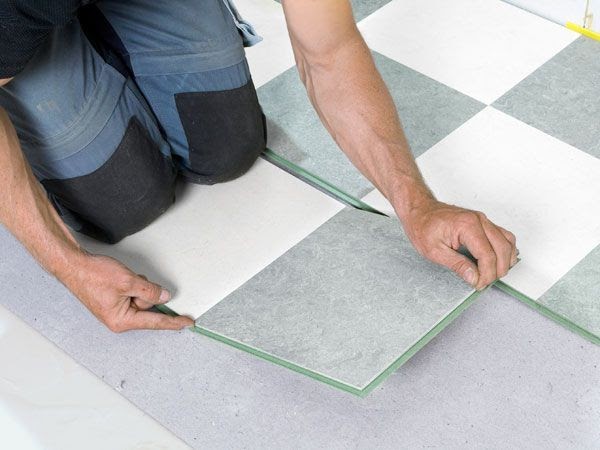
Linoleum flooring is very similar to luxury vinyl planks, engineered wood, and laminate flooring. A substantial difference is that linoleum is harder to cut than other floorings. Cutting will be required as linoleum comes in either rolls or tiles, and adjusting the linoleum to the size of the room will be necessary.
Both linoleum sheets and tiles are floating floors that can cover the bumps really well. Unlike vinyl, linoleum is not waterproof flooring – there will be a need to seal the surface after installation. It may also have to be done periodically to maintain the good looks and resistance towards scratches and water.
| Effort | Outcome | Cost |
| More Effort | Average | Costly |
Linoleum may not completely camouflage the bumps of the uneven surface, but it will definitely cover the whole floor, though you may still feel like you’re on an uneven floor.
Carpet
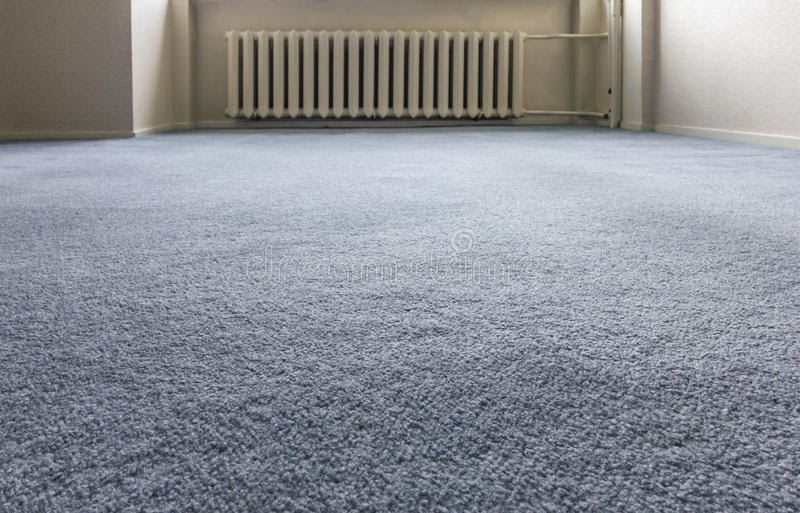
Carpet flooring is probably the best flooring for uneven surfaces, but it is not possible to place them everywhere. In areas with a lot of moisture, liquid spills, and water, carpet is not the best choice.
However, for any other areas carpet will do exceptionally well on uneven floor. The fur and the soft texture of the carpet can camouflage all the bumps and provide you with great comfort. The installation will have to be done by gluing down, so it is quite easy to DIY.
| Effort | Outcome | Cost |
| More Effort | Best | Minimal |
With these options, don’t forget that you can still go for real hardwood floors if you have the means. Calling in a professional to level the floor will go a long way, though it could be a bit expensive. Fixing an uneven floor is not impossible. If you are sticking with an uneven floor, here are some things to consider before selecting flooring.
Things To Consider
There are three main things to consider when picking flooring for uneven floor surfaces.
Flexibility – Flexible flooring can help reduce the discomfort of standing on bumpy and uneven floor surfaces.
Strength – If the flooring is not flexible, ensure that the floors are floating floors, and are sturdy and strong.
Installation – If the flooring you have picked is not a floating floor, know that you may require underlayment for better performance. This can add to the costs as well.
Leave a Reply